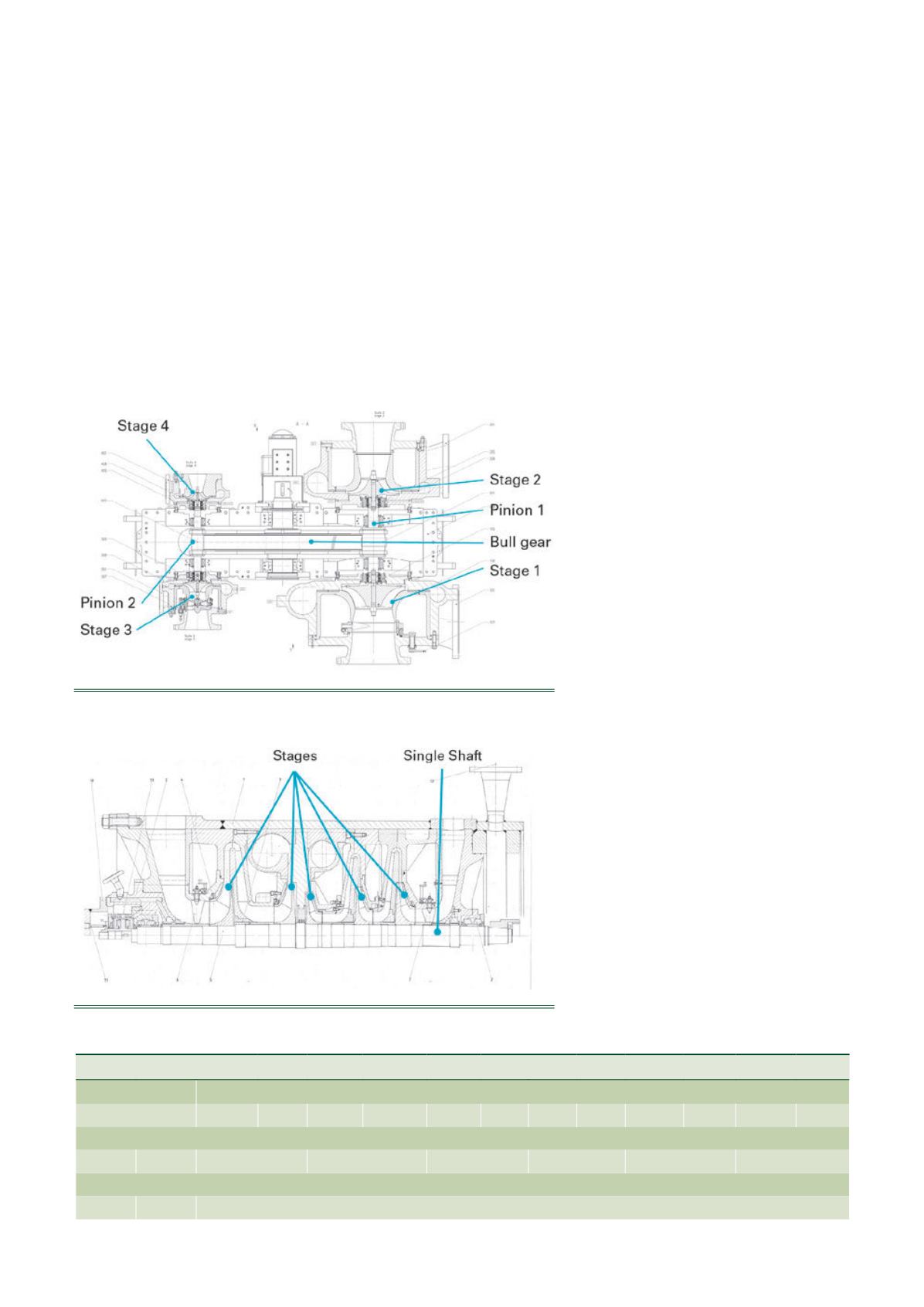
50
| WORLD FERTILIZER |
NOVEMBER 2016
encouraged turbomachinery manufacturers to develop
compressors specifically designed for the job. Single-shaft
centrifugal and newer, integrally-geared centrifugal
compressors have surpassed high-speed reciprocating
compressors as the go-to solution to produce the necessary
pressure levels for supercritical CO
2
.
Used for decades in numerous industrial gas, and oil and
gas, applications, integrally-geared compressors (IGCs) deliver
higher efficiency and have a smaller footprint than their
single-shaft counterparts. And compared to reciprocating
technology, they not only save energy and space but also
deliver higher flow levels and require less frequent
maintenance.
Despite these advantages, urea plant developers and
managers might be hesitant to adopt a compressor
technology with which they are less familiar. After all,
compressors represent an important investment and they
should provide decades of reliable, efficient operation with
minimal downtime.
Information obtained through the recent testing and
development of high-pressure CO
2
compressors might offer
clarity. Atlas Copco Gas and Process carried out a detailed
analysis of an integrally-geared compressor design used as
the basis for two IGCs that were delivered to a Russian
fertilizer producer. The performance values of the
compressors were compared to a reference single-shaft
centrifugal compressor model under identical operating
conditions.
Analysis showed a 23% lower power consumption and a
15% greater isothermal efficiency for the integrally-geared
versus the single-shaft design, along with
smooth and trouble-free operation.
IGCs and CO
2
Before going into specifics, it might be helpful
to briefly look over integral gear technology’s
history and review its growing importance in
the field of CO
2
compression.
Extending back to the late 1960s,
integrally-geared centrifugal compressors
have played important roles in industries
including industrial gases, oil and gas, and
power generation. While IGCs were first
employed for the compression of air, nitrogen,
various hydrocarbons and downstream
petrochemicals, applications arose for low- to
mid-pressure CO
2
applications.
For the most part, these applications were
in the food and beverage industry and also
included carbon sequestration or CO
2
reuse in
greenhouses after the gas was emitted from
coal gasification, gas-to-liquids and other
processes. For IGC manufacturers, subcritical
CO
2
compressors provided valuable firsthand
experience working with the gas, which was
added to a knowledge base built up through
designing machines for medium or higher
molecular weight gases.
At the beginning of the 21
st
century, a
number of new uses for higher pressures of
CO
2
emerged. Several of these, such as
enhanced oil recovery (EOR) and using CO
2
as
the working fluid in supercritical power cycles,
require the gas above its critical temperature
and pressure, rendering it a supercritical fluid.
The field of EOR, which employs supercritical
Figure 1.
Cross section of a typical integrally-geared compressor design.
Figure 2.
Cross section of a single-shaft compressor design.
Table 1.
Comparative shaft speeds
Stages
1
2
3
4
5
6
7
8
9
10
11
12
Integrally-geared compressor
Speed rpm 18 034
32 461
36 068
37 455
-
-
Single-shaft design
Speed rpm
20 000


